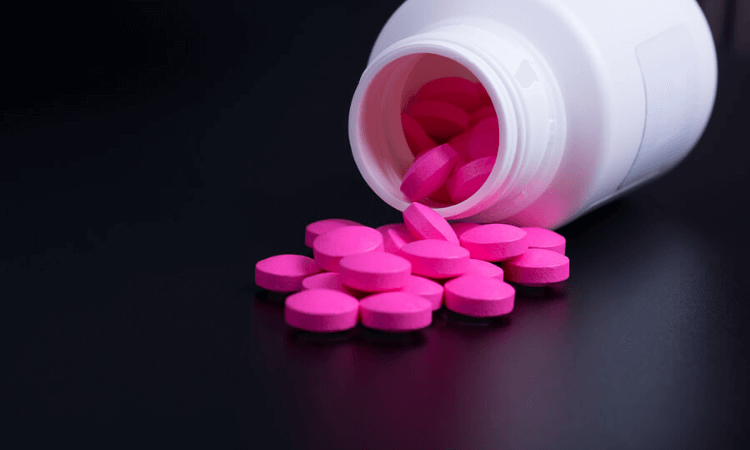
Xarelto (rivaroxaban) is a prescription blood thinner commonly used to prevent blood clots and heart dysrhythmia. Without treatment, these conditions can lead to strokes, and for these reasons, the use of Xarelto in many may be vital in saving a person from debilitating or life-threatening complications.
According to Consumer Reports, alcohol consumption is dangerous for patients using blood thinners. Despite this, it also revealed that more than 40% of adults taking Xarelto also consumed alcohol in conjunction. Some experts say that moderate use (no more than two drinks per day) may be relatively safe. Unfortunately, many people who drink alcohol have a substance use disorder and may find themselves unable to cut back to this limit. When this occurs, individuals are urged to seek professional treatment.
Side Effects of Combining Xarelto and Alcohol
Bleeding is a potential side effect that likely warrants the most concern regarding the use of Xarelto and alcohol. Blood thinners, as the name implies, work to thin the blood and prevent it from clotting—this effect is especially significant for those at a heightened risk of suffering from a stroke. However, due to the blood being thinned, some individuals are at risk for excessive bleeding.
Common bleeding associated with Xarelto that is not life-threatening includes frequent nosebleeds and prolonged bleeding from superficial or minor cuts or abrasions. Less commonly, bleeding may occur that is life-threatening.
Xarelto and alcohol are not known to have interactions regarding a person’s mental state. However, the chances of physical problems occurring are significantly higher when these two substances are used together. For example, alcohol also acts as a blood thinner, and according to research, even moderate use can have this effect. For this reason, the risk of excessive bleeding may be higher when alcohol is consumed in addition to Xarelto.
Combining Xarelto and alcohol can increase the risk of worrisome bleeding events, including the following:
- Blood is present in the urine or stool
- Blood is present in mucus when coughing
- Bleeding occurs from a cut or other wound that lasts longer than 10 minutes
- Menstrual bleeding is worsened
- Abnormal bruising occurs that grows in size
- Severe headaches
All of these side effects are warning signs that a person may be experiencing uncontrolled bleeding and needs immediate medical help. This is especially true for older individuals and those in a weakened physical state due to other health problems.

Another danger of combining Xarelto and alcohol includes an increased risk of experiencing a stroke, which is the very event that Xarelto is meant to treat. It’s also important to remember that alcohol is a powerful intoxicant that impairs a person’s motor skill functioning. As such, a person who is drinking may be more likely to fall or sustain another injury, including auto accidents. These events can lead to excessive bruising or bleeding, and if they occur, may be life-threatening.
Another factor to consider is that, although the liver breaks down both Xarelto and alcohol, it does not necessarily do so simultaneously. Experts caution that the liver’s ability to process Xarelto may become impaired as it is also now responsible for breaking down alcohol, which may be a priority. As a result, this can lead to an excessive amount of Xarelto in the bloodstream, which is yet another risk for excessive bleeding.
And finally, chronic alcohol use can lead to altered liver and kidney function. If a person has chronic medical conditions associated with either the liver or kidneys, the metabolism of a blood thinner will be adversely impacted. Once again, this may put a person at risk for life-threatening bleeding events. These may include internal bleeding that may not be obvious, so it’s important to know the warning signs that this very serious problem may be occurring.
If you think about it, the use of alcohol with Xarelto or other medications is counterintuitive. Moreover, the goal of Xarelto is to prolong a person’s life and reduce the risk of severe health problems. Alcohol use essentially does the opposite. A person on blood thinners may be at a heightened risk for injuries and excessive bleeding. Also, regular alcohol use can result in a wealth of other health problems. These include pancreatitis, liver disease, several forms of cancer, and premature death.
Getting Treatment for Alcoholism
If you or someone you know is using Xarelto and is not consuming alcohol responsibly, contact us today to speak to one of our representatives. We offer comprehensive, evidence-based outpatient treatment programs that feature multiple services vital to the recovery process.
We ensure our clients will receive all the tools and support they need to abstain from alcohol use and sustain long-lasting sobriety. We believe that every person deserves to experience a healthy and fulfilling life, and we can help them achieve this!